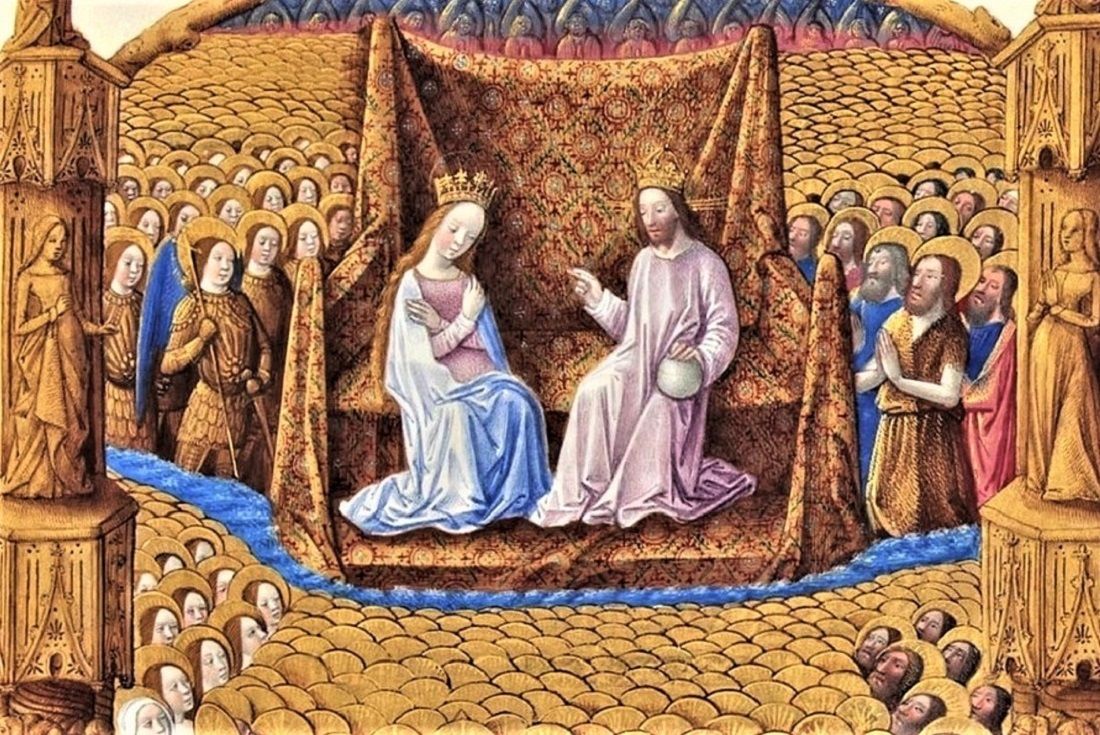The 173rd commencement exercises will take place at the University of Notre Dame this weekend. Like most University commencements, there will be a good deal of self-congratulatory statements about the remarkable promise demonstrated by the class of 2018. Likewise, there will be generic exhortations to the newly minted students to "change the world," to respond to the "unique challenges of this generation."
Yet not everything about these commencement exercises is quite so formulaic. At the conclusion of graduation on Sunday morning at Notre Dame Stadium, students will sing the Alma Mater once more (this time facing their parents and friends).
The personification of the University as "nurturing mother," as the place that brought the students into wisdom, is shared across colleges and universities. Students at Harvard College sing out in praise of "Fair Harvard!" The Bulldogs of Yale pledges themselves in song to God, country, and Yale. At the University of Tennessee, students clad in orange and white sing a wistful hymn commemorating the search for wisdom begun "on a hallowed hill in Tennessee."
Notre Dame's Alma Mater is a strange one, even among the already strange genre of these lyric encomia, with the students singing out:
Notre Dame, our Mother/Tender, strong and true/Proudly in the heavens,/Gleams thy gold and blue.//Glory's mantle cloaks thee/Golden is thy fame,/And our hearts forever,/Praise thee, Notre Dame./And our hearts forever,/Love thee, Notre Dame.
In the course of the hymn, it's not the University that is praised per se. Rather, it is the Mother of Jesus, the blessed Virgin Mary, queen of heaven and earth. In the end, Notre Dame is not exclusively the name of a college football team or a University near South Bend, IN. Rather, Notre Dame (despite the Midwestern's accent bastardization of the French) is Our Lady. The school seal manifests this fact—the Latin vita, dulcedo, spes (life, sweetness, and hope) referencing the Marian hymn Salve Regina.
There's something counter-cultural to the singing of a Marian hymn in the context of the commencement exercises. Colleges traffic in generic doxological phrases. They pursue excellence unto the end. Students are praised for the awards they receive and their acceptance into elite graduate schools or services programs. Success in professional life is the horizon that the contemporary research University points students. Politics, medicine, law, and the professorship—these are the praiseworthy activities that students should strive for.
But not so says the Alma Mater. Not so says the Vita, Dulcedo, Spes inscribed upon the doctoral robes of Our Lady's University. Even the taste of success in this life is always mixed with bitterness in this "valley of tears." New jobs mean leaving old friends and family. Success in life, no matter how remarkable, will not quench the deepest desire of the human heart.
If we were disembodied creatures, without affections, without hopes and desires, without bodies that break down and age, we might be able to perfectly pursue success. But we are creatures in a fallen world, "mourning and weeping" on our pilgrimage. Along the way, we fall in love and have our hearts broken. We suffer alongside our loved ones diagnosed with terminal illnesses. New career possibilities means leaving old friends and family. Not to mention, the possibility that we'll fail to achieve our goals altogether, and that we too are born to die.
Such dark thoughts are not normally uttered during commencement exercises. For, there's something about the contemporary university that seeks to understand itself as a source of salvation. The university, through its technical efforts, can end poverty, build a city of justice, save struggling schools, end polarization, etc. But, the university cannot save us from the one thing that is most terrifying: death. The university, as it turns out, is not divine.
The Salve Regina, sung in praise to the Blessed Virgin, testifies to our graduates that there is but one source of salvation available to the human person: "the blessed fruit of thy womb, Jesus." The mystery of the Incarnation, the mystery of Christ's life, death, and resurrection, is the only thing that can save us mortal creatures. It is not the power and prestige of law school admissions or entrance into MBA programs that rescues human beings from death. Rather, it is the love of God made manifest in the powerlessness of an infant born in the hidden womb of a mother.
Perhaps, this is the exhortation that our graduates most need to hear. Our lives are not measured by the number of honorary doctorates received or quantities of cancers cured (of course, both are created goods worthy of appropriate praise). The real grist for the mill of salvation are the hidden deeds of love unavailable to the eyes of the world. It is a father or mother patiently caring for a sick child. It is the hidden deed of mercy performed to the poor man or woman on the streets of a city who longs for human contact, for friendship, for someone to remember his or her name.
It is this hiddenness of love that makes Mary an icon of the Christian life. Mary is praised as our life, our sweetness, and our hope not because we have transferred the feminine qualities of God to a mere creature. Nor for that matter is Mary to be worshipped as God alone should be adored. Rather, she is the mother of Jesus, the one who shared most perfectly in the hidden mystery of salvation that is the destiny of the human race. We turn to the "mother of mercy" (mater misericordiae), we praise her, because we mere mortals need a telos, an end to direct our lives. As John Cavadini writes:
Invoking the servant of God is praising and thanking God, who deigned in Christ to know this human fatherly suffering by experience, in solidarity, in one of his perfected members. It is, in the end, to invoke the love of God. But in this situation, who better to invoke than the “Mother of Mercy,” the one in whom, as a perfected member of His Son and the “typus” of all the whole body of perfected member, God experienced what it was like to see one’s very own child, bone of my bones and flesh of my flesh, die before me. Invoking Mary as “Mother of Mercy” invokes the depth of God’s mercy, not because Mary is divine, but because in her absolutely and fully human motherly love, a real mother’s love, we have known the depths of God’s solidarity with us. God is not stingy, restricting . . . solidarity only to the specific historical sufferings of Christ, but extends that solidarity to those who, as members of the one Body, make up for what is lacking in the sufferings of Christ. It is thus that in the cult of Mary, and by derivation in the cult of all those whose “type” she is, God is most truly and most deeply praised.
So students at the University of Our Lady conclude their commencement exercises not with more accolades directed to themselves or even to their family. Commencement exercises conclude with the only horizon that can complete the human heart: eternal life with God. With the possibility of membership in the communion of saints.
And the unknown future of students are given over to the "mother of mercy," who will accompany each of them throughout their remaining days on this earth. There will be as many sufferings, failures, and incompletes as successes, accomplishments, and perfections.
The mark of success for students will not be what they achieve. But to the degree to which they live the hidden mystery of love, revealed in the mystery of Christ and the Blessed Virgin Mary, that is the meaning of the world.
The mystery of life. The mystery of sweetness. The mystery of hope.
And our hearts forever, love thee Notre Dame.

